Knowde Brand Summary
Identification
- Technologies
- Product Families
- Animal Feed & Nutrition Functions
Features & Benefits
- Labeling Claims
Applications & Uses
- Markets
- Animal Species
Identification
Features & Benefits
Applications & Uses
Large multi-mycotoxin occurrence
Animals are continuously exposed to many mycotoxins at the same time.
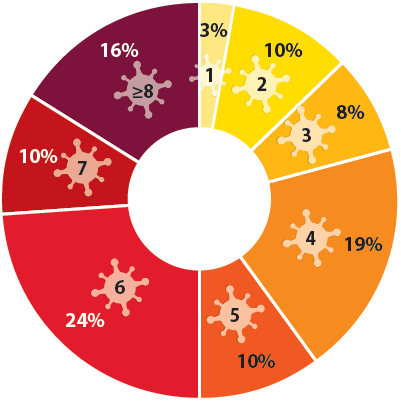
Figure 1. Distribution of total number of mycotoxins per case.
Large Presence of Emerging Mycotoxins in Swine
The emerging mycotoxins were the predominant ones in the blood from swine (table 1). Emerging mycotoxins can be as toxic as the legislated mycotoxins (aflatoxins, deoxynivalenol, fumonisins, ochratoxin A, T-2 and zearalenone).
| Mycotoxin | Prevalence (%) |
| Tenuazonic acid | 68 |
| Enniatin B1 | 62 |
| Enniatin B | 54 |
| Ochratoxin A | 54 |
| Beauvericin | 30 |
Table 1. The five most common mycotoxins detected in blood in the introductory global survey in swine farms.
The following reduces the immune response and animal performance:
Large Presence of Emerging Mycotoxins in Poultry
The emerging mycotoxins were the predominant ones in the blood from poultry (table 2). Emerging mycotoxins can be as toxic as the legislated mycotoxins (aflatoxins, deoxynivalenol, fumonisins, ochratoxin A, T-2 and zearalenone).
| Mycotoxin | Prevalence (%) |
| Tenuazonic acid | 66 |
| Enniatin B1 | 34 |
| Ochratoxin A | 32 |
| Beauvericin | 27 |
| Zearalenone | 24 |
Table 2. The five most common mycotoxins detected in blood in the introductory global survey in poultry farms.
The following reduces the immune response and animal performance:
Large Presence of Emerging Mycotoxins in Ruminants
The emerging mycotoxins were the predominant ones in the blood from ruminants (table 3). Emerging mycotoxins can be as toxic as the legislated mycotoxins (aflatoxins, deoxynivalenol, fumonisins, ochratoxin A, T-2 and zearalenone).
| Mycotoxin | Prevalence (%) |
| Beauvericin | 89 |
| Enniatin B1 | 78 |
| Enniatin B | 78 |
| Tenuazonic acid | 67 |
| Enniatin A1 | 34 |
Table 3. The five most common mycotoxins detected in blood in the introductory global survey in ruminants farms.
The following reduces the immune response and animal performance:
The most profound emerging mycotoxins produced by Alternaria and Fusarium species are as follows:
Multiple modes of action to support animal to combat mycotoxin exposure:
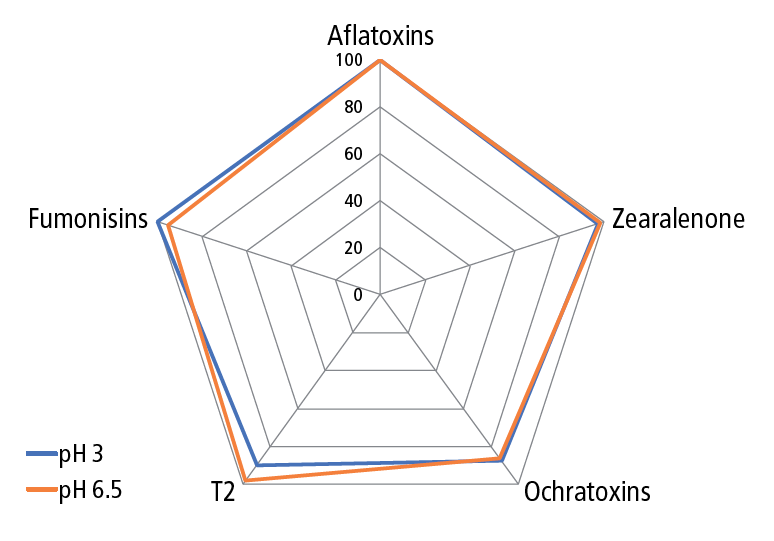
Figure 2. In vitro testing of the binding capacity of Escent® against several mycotoxins at the University of Missouri, USA.
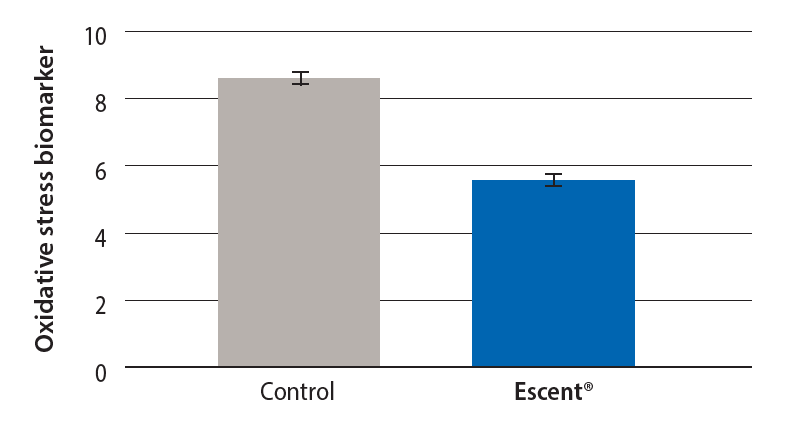
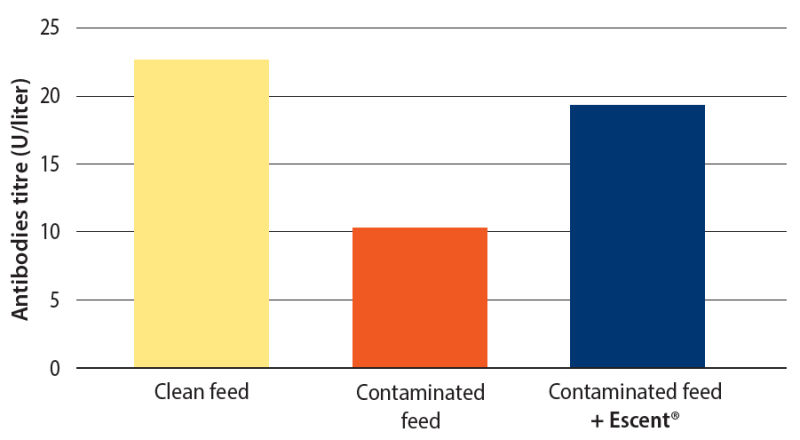
Fig. a. Improves immune response in Swine.
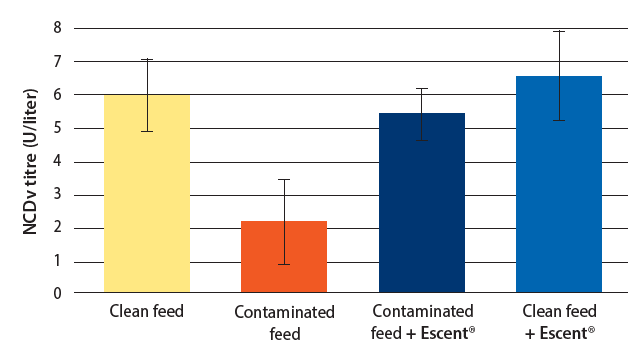
Fig. b. Improves immune response in Poultry.
| Mastitis cases (%) | |
| Control group | 20% |
| Escent® group (27 g/animal/day) | 0% |
Table. Improves immune response in Ruminants.
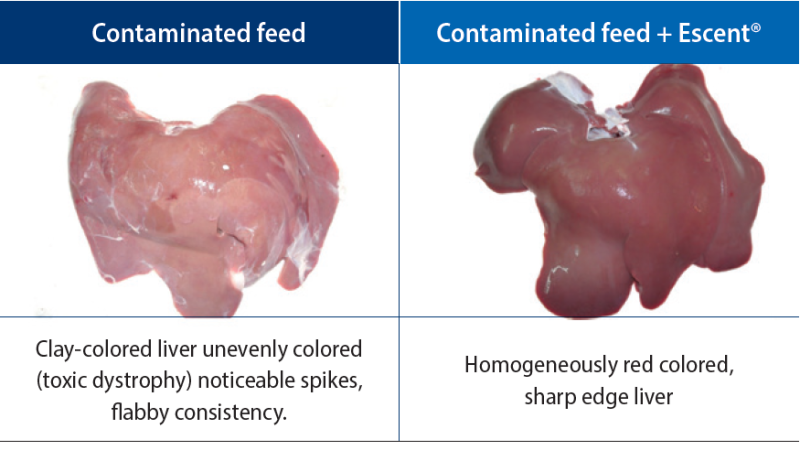
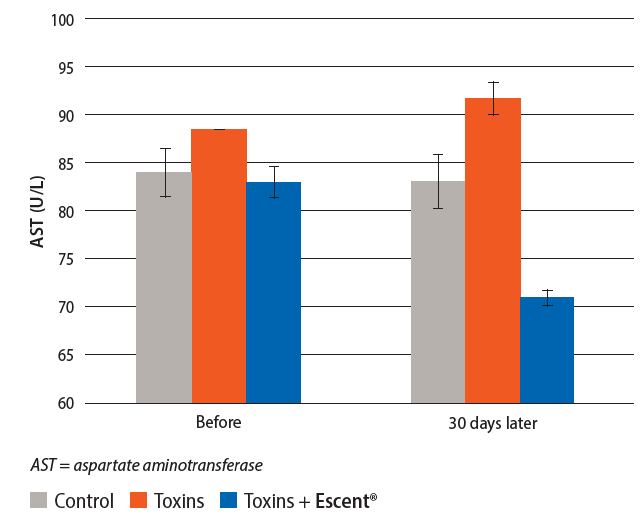
Escent® is the first technology that demonstrated the capacity of reducing mycotoxin levels in the biological fluids under a multi-mycotoxin exposure.
| Detoxification under real farm conditions (studied animals: lactating sows) | |||
| Day 0 (under another mycotoxin binder) | Day 30 (Escent® at 1 kg/T for 30 days) | ||
| Feed | Mycophenolic acid (40 ppb) | Aflatoxin B1 (8.1 ppb) | |
| Aflatoxin B2 (1.0 ppb) | |||
| Fumonisins (139 ppb) | |||
| Ochratoxin A (12.6 ppb) | |||
| Blood | Alternariol (traces) | Fumonisin B3 (detected) | Ochratoxin A (traces) |
| Beauvericin (traces) | Ochratoxin A (traces) | Tenuazonic acid (traces) | |
| Deoxynivalenol (traces) | Tenuazonic acid (1.25 ppb) | Zearalenone (Traces) | |
| Fumonisin B1 (25 ppb) | Zearalenone (2.52 ppb) | ||
| Fumonisin B2 (12 ppb) | |||
| Animals suffering respiratory problems (fumonisins), reproductive alterations (alternariol + zearalenone), high mortality. | Health status of the animals improved 8 days after Escent® introduction and 30 days later animals did not suffer any clinical symptom. | ||
Escent® reduces levels of mycotoxins in blood and improves health status and performance.
Reduction in biological fluids from piglets:
High concentration of mycotoxins in the feed (deoxynivalenol = 900 ppb and zearalenone = 75,000 ppb)
Escent® is the first technology that demonstrated the capacity of reducing mycotoxin levels in the biological fluids under a multi-mycotoxin exposure.
| Detoxification under real farm conditions (studied animals: breeders) | |||
| Day 0 (under another mycotoxin binder) | Day 30 (Escent® at 1 kg/T for 30 days) | ||
| Feed | Aflatoxin B1 (4.3 ppb) | Aflatoxin B1 (2.7 ppb) | |
| Fumonisins (1,010 ppb) | Fumonisins (894 ppb) | ||
| Nivalenol (146 ppb) | Nivalenol (98.1 ppb) | ||
| Zearalenone (150 ppb) | Zearalenone (20 ppb) | ||
| Blood | Alternariol (24.8 ppb) | Enniatin B1 (traces) | Tenuazonic acid (2.85 ppb) |
| Alternariol monomethyl ether (3.02 ppb) | Tenuazonic acid (3.10 ppb) | ||
| Beauvericin (traces) | Zearalenone (traces) | ||
| Animals suffering intestinal infections (bacterial and necrotic enteritis). | Health status of the animals improved 5 days after Escent® introduction and 30 days later animals did not suffer any clinical symptom. | ||
Escent® reduces levels of mycotoxins in blood and improves health status and performance.
Reduction in blood from broilers:
High concentration of mycotoxins in the feed (deoxynivalenol = 5,000 ppb and aflatoxin B1 = 20,000 ppb)
Escent® is the first technology that demonstrated the capacity of reducing mycotoxin levels in the biological fluids under a multi-mycotoxin exposure.
| Detoxification under real farm conditions (studied animals: dairy cows, mid late group) | |||
| Day 0 (under another mycotoxin binder) | Day 30 (Escent® at 1 kg/T for 30 days) | ||
| TMR | Deoxynivalenol (44.2 ppb) | Deoxynivalenol (459 ppb) | |
| Fumonisins (682 ppb) | Fumonisins (1,320 ppb) | ||
| Blood | Beauvericin (traces) | Enniatin B1 (traces) | No mycotoxins detected |
| Enniatin B (traces) | Tenuazonic acid (traces) | ||
| Animals suffering reproductive problem (cystic ovaries) + high number of SCC (>250,000) | Reproductive problems solved and reduction of somatic cell counts (<180,000) | ||
Escent® reduces levels of mycotoxins in blood and improves health status and performance.
Reduction in blood from broilers:
High concentration of mycotoxins in the feed (deoxynivalenol = 5,000 ppb and aflatoxin B1 = 20,000 ppb)